A History of Artistic Visionaries
Gregg Swanzey | January 14, 2015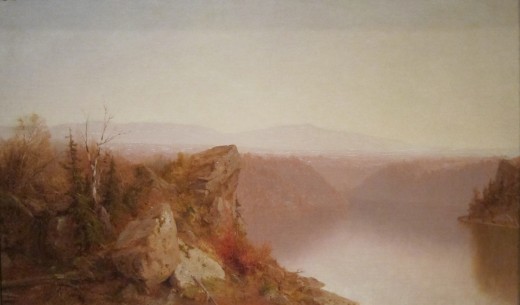
“Landscape” by Hudson River School painter Jervis McEntee.
Renowned artists and designers have called Kingston home since the 19th Century. For example, Calvert Vaux is buried over in Montrepose Cemetery along with some other notables. He was partner to well-known landscape architect Andrew Downing. Together they designed many significant projects, including the grounds of the White House and the Smithsonian Institution in Washington D.C. After Downing died during a fire in a steamboat accident in 1852, Vaux went on to become one of the founding members of the American Institute of Architects in 1857 and brought on Frederick Law Olmsted, who had never before designed a landscape plan, to help design the Greensward Plan, which would become Central Park. As Olmsted, Vaux and Company, they designed Prospect Park and Fort Greene Park in Brooklyn, and Morningside Park in Manhattan.
In 1854, Calvert Vaux married Mary McEntee, of Kingston, New York, the sister of Jervis McEntee, a Hudson River School painter. Jervis McEntee was one of the Hudson River School painters who studied with Frederic Edwin Church and was among the leading artists in New York in the late 19th century.
We are fortunate to have five volumes of McEntee’s diaries spanning the years 1872 to 1890. He touches on such subjects you might expect such as the art market, patrons and collectors, his residence in the Tenth Street Studio Building in New York, the Century Club, and the impact of European painting on American artists. But he also goes into local Kingston politics, complains about taxes, and his own run-ins with lenders.
Here is a smattering of some excerpted entrees from his diary to give you an idea:
Sunday, Sept 1 1872- Calvert [Vaux] and I took a walk shortly after breakfast out through Ludlum’s woods and beyond [above East Chester St]. It was sufficiently warm in the sunshine but we were too cool in the shade. We sat down on the rocks in the rear of Terrys farm overlooking Kingston and talked Art and smoked our pipes and speculated on many things. We agree that in the country one needs companionship and that time often hangs heavy without it. Took a stroll over above the Steep Rocks and loitered about until after two o’clock when we came home to dinner.
August 20, 1877- Downing, King, Putnam and I took the Wallkill Valley train at 7 o’clock and went down to New Paltz. From there we walked up to Lake Mohonk, a part of the way across the hills arriving there about 10. I had not been there since 1861 I think when Gifford, Whittredge, John White [other notables of the Hudson River School] and I staid there over night on our walking trips from Bracketts. Now there is a large hotel there and walks in all directions and people everywhere in what used to be one of the wildest places I ever knew. We had dinner and remained there until nearly four o’clock when we walked down the other side of the mountain to Rosendale and took the train for home where we arrived a little after 8 having spent a very pleasant day.
August 28, 1878- We returned from a most delightful excursion to Lakes Minnewaska and Mohonk last evening. Sunday the rain cleared up at noon and at four we started and drove to High Falls were we spent the night. The ride of ten to 12 miles [was] a long and gradual ascent up the Coxing Kill [Clove Valley Road]. The lake resembles Mohonk in its general features but is about 3 times its area and 500 feet higher. The woman in charge of the boarding house furnished a lunch, we rowed round the lake and left for High Falls about 3. Met Mr. Smillie the proprietor there.
Saturday, June 27, 1885 Took my father out for a ride shortly after breakfast. Drove to Rondout then up to Greenkill via Eddyville crossing over to Lucas’ Turnpike and home through Kingston. It was pretty hot and dusty.
Tuesday, Dec 21, 1886 The sleighing is capital and the streets thronged with sleighs both in Kingston and Rondout. I went to my studio [on West Chestnut St] at noon and worked until after 3 finishing the little interior but began no new one. I wrote the titles on the back of most of the little sketches.
I recommend you make a pot of coffee or put water on to boil for some tea and sit down with the diaries through the Smithsonian’s searchable website. It will give you great historical insight into our city and the region.
Even back then artists might have a residence in New York City but would retreat to the Kingston and Ulster County area for respite and inspiration. Kingston is as a great home base for getting out and exploring as it ever was. You can retrace those same pathways the great artists and landscape architects experienced by rail trail, carriage road, or back country road.
Read On, Reader...
-
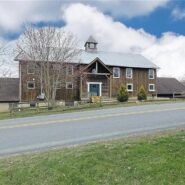
Jane Anderson | April 1, 2024 | Comment A Westtown Barn Home with Stained-Glass Accents: $799.9K
-
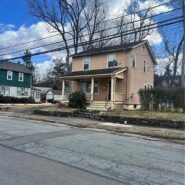
Jane Anderson | March 25, 2024 | Comment A c.1920 Three-Bedroom in Newburgh: $305K
-
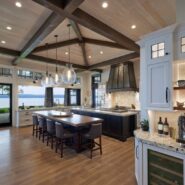
-
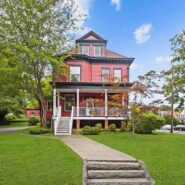
Jane Anderson | January 30, 2024 | Comment A Renovated Three-Story Beauty in Poughkeepsie: $695K

